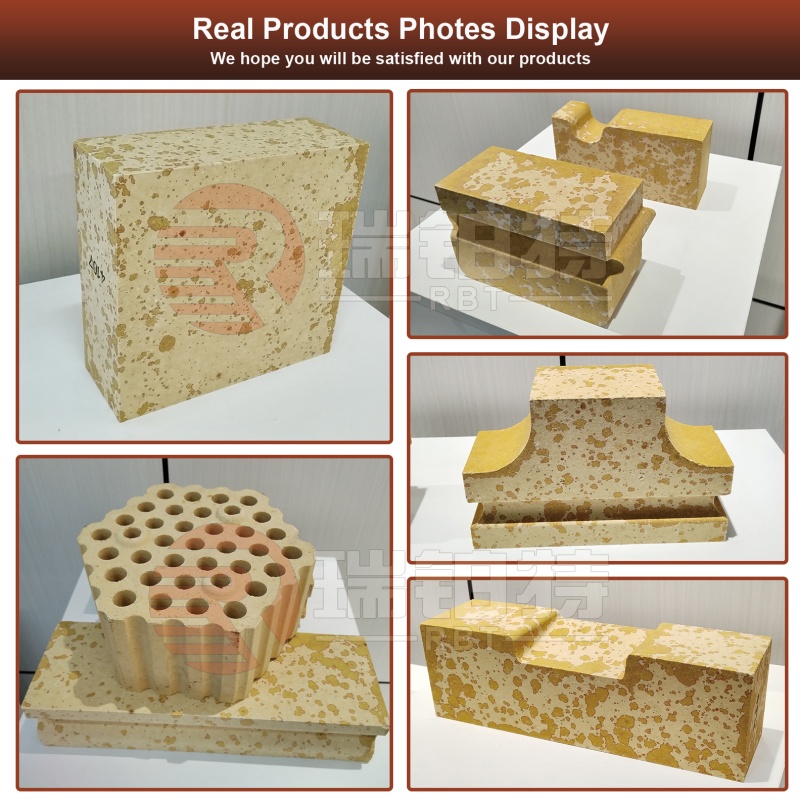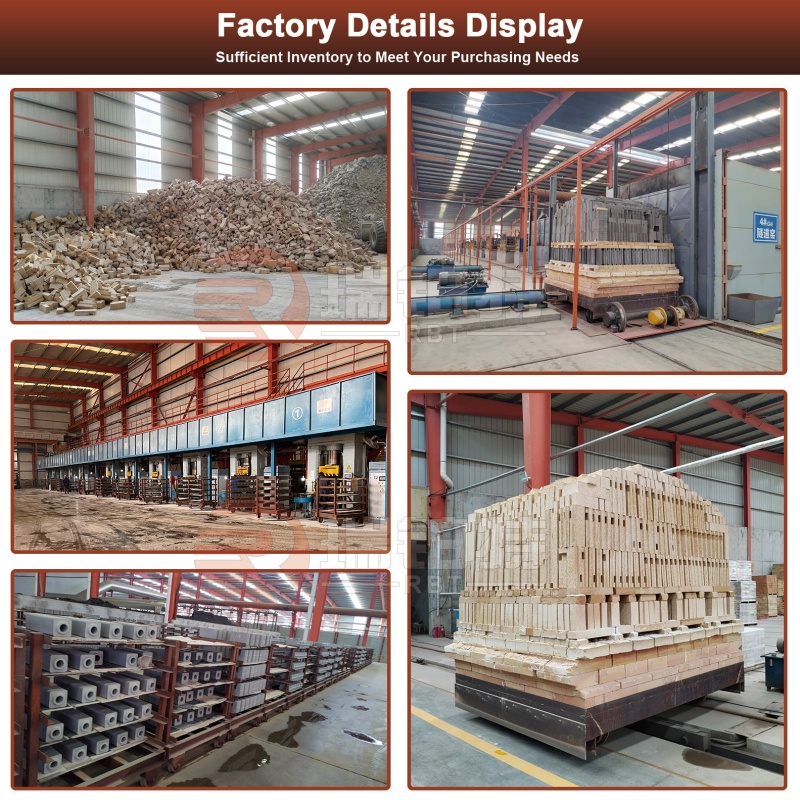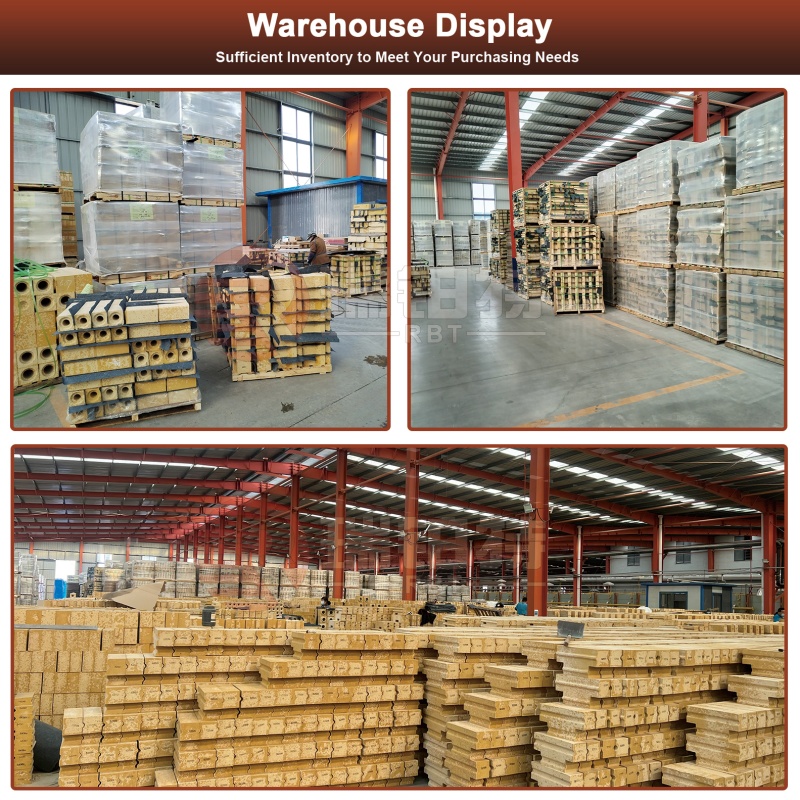
In industrial processes that rely on extreme heat—from melting glass to smelting steel—choosing the right refractory material can make or break operational efficiency, safety, and cost-effectiveness. Silica Refractory Bricks stand out as a top choice for these harsh environments, thanks to their exceptional high-temperature resistance (up to 1750°C), low thermal expansion, and strong resistance to acid erosion. But where exactly do these durable bricks deliver the most value? Let`s break down their critical uses across key industries, and why they`re the preferred solution for engineers and plant managers worldwide.
What Makes Silica Refractory Bricks Ideal for High-Temperature Applications?
Before diving into their uses, it`s important to understand the properties that make silica refractory bricks indispensable. Unlike other refractory materials (such as fire clay or alumina bricks), silica bricks are composed primarily of crystalline silica, which gives them:
Superior heat resistance: They maintain structural integrity even at temperatures above 1700°C, making them suitable for continuous high-heat processes.
Low thermal expansion: This minimizes cracking and warping when exposed to rapid temperature changes (a common issue in industrial furnaces).
Acid erosion resistance: They hold up well against acidic gases and slags, a must for industries like coke production and glass manufacturing.
Long service life: Their durability reduces the need for frequent replacements, cutting maintenance costs and downtime.
These properties make industrial silica refractory bricks a versatile solution for sectors that demand reliability under extreme conditions.
Core Uses of Silica Refractory Bricks by Industry
Silica refractory bricks aren`t a "one-size-fits-all" material—their unique benefits align with specific industrial needs. Below are the sectors where they play a critical role, along with how they solve key challenges.
1. Coke Ovens: The Backbone of Steel Production
Coke ovens are essential for converting coal into coke (a key fuel for steelmaking), and they operate at temperatures between 1100°C and 1300°C for extended periods. Silica refractory bricks for coke ovens are the gold standard here for two key reasons:
They resist the acidic gases (like carbon monoxide and sulfur dioxide) released during coal carbonization, preventing brick degradation and gas leaks.
Their low thermal expansion ensures the oven`s lining stays intact through daily heating and cooling cycles, avoiding costly cracks that could halt production.
Plant managers rely on high-temperature silica refractory bricks in coke oven chambers and flues, as even small lining failures can lead to weeks of downtime—costing millions in lost output.
2. Glass Melting Furnaces: Ensuring Pure, Consistent Glass
Glass production requires melting raw materials (sand, soda ash, limestone) at temperatures up to 1600°C, and the furnace lining must not react with the molten glass (which would contaminate the final product). Silica bricks for glass melting furnaces are ideal because:
Their inert nature prevents chemical reactions with molten glass, ensuring the glass remains clear and free of impurities.
They withstand the constant exposure to high heat and molten glass flow, reducing lining wear and extending furnace life.
They`re often used in the“superstructure”of glass furnaces (the upper sections above the molten glass), where temperatures are highest and acid vapors are most concentrated.
For glass manufacturers, using acid-resistant silica refractory bricks translates to fewer product defects and longer furnace runtimes—critical for meeting tight production deadlines.
3. Steel Industry Kilns: Handling Extreme Heat and Slag
Steel production involves multiple high-heat processes, including blast furnaces, electric arc furnaces (EAFs), and ladle furnaces. Silica refractory bricks for steel kilns excel in these environments because:
They resist the abrasive action of molten steel and slag, which can quickly wear down less durable refractories.
Their high heat capacity helps maintain consistent temperatures in the kiln, improving steel quality and reducing energy use.
They`re often used in the“hearth" (bottom) and“sidewalls" of EAFs, where temperatures reach 1700°C and mechanical stress is high.
Steel mills that use long-life silica refractory bricks report lower maintenance costs and fewer unplanned shutdowns—key advantages in a highly competitive industry.
4. Other Industrial Applications
Beyond coke, glass, and steel, silica fire bricks find use in other high-temperature settings, including:
Ceramic kilns: They provide a stable lining for firing ceramics at temperatures up to 1600°C.
Chemical reactors: Their acid resistance makes them suitable for reactors handling acidic processes (e.g., sulfuric acid production).
Waste incinerators: They withstand the high heat and corrosive gases generated during waste burning.

How to Choose the Right Silica Refractory Bricks for Your Application
Not all silica refractory bricks are the same—selecting the right type depends on your specific needs:
Temperature range: Choose bricks rated for your process`s maximum temperature (e.g., 1750°C bricks for glass furnaces).
Acid exposure: If your process generates acidic gases, opt for acid-resistant silica refractory bricks with a higher silica content (95%+).
Custom sizes: Many manufacturers offer custom silica refractory bricks to fit non-standard furnace designs—this ensures a tight, crack-free lining.
Quality certification: Look for bricks certified to international standards (e.g., ISO, ASTM) to ensure consistency and durability.
Why Partner with a Trusted Silica Refractory Bricks Manufacturer?
The quality of your silica refractory bricks directly impacts your operation`s efficiency and safety. Working with a reputable manufacturer ensures:
Consistent quality: Strict quality control (e.g., testing for density, strength, and heat resistance) guarantees reliable performance.
Technical support: Experts can help you select the right bricks for your application and provide installation guidance.
Fast delivery: Timely delivery minimizes downtime when replacing old linings.
Whether you need cheap silica refractory bricks (high quality) for a small kiln or bulk orders for a large steel mill, a trusted supplier will tailor solutions to your budget and timeline.
Final Thoughts
Silica Refractory Bricks are more than just a lining material—they`re a critical component of high-temperature industrial processes. From coke ovens to glass furnaces, their unique properties deliver reliability, efficiency, and cost savings that other refractories can`t match. By choosing the right silica bricks for your application and partnering with a trusted supplier, you can ensure your operation runs smoothly, safely, and profitably for years to come.
Ready to find the perfect silica refractory bricks for your business? Contact us today for a custom quote and expert advice!

Post time: Oct-13-2025












